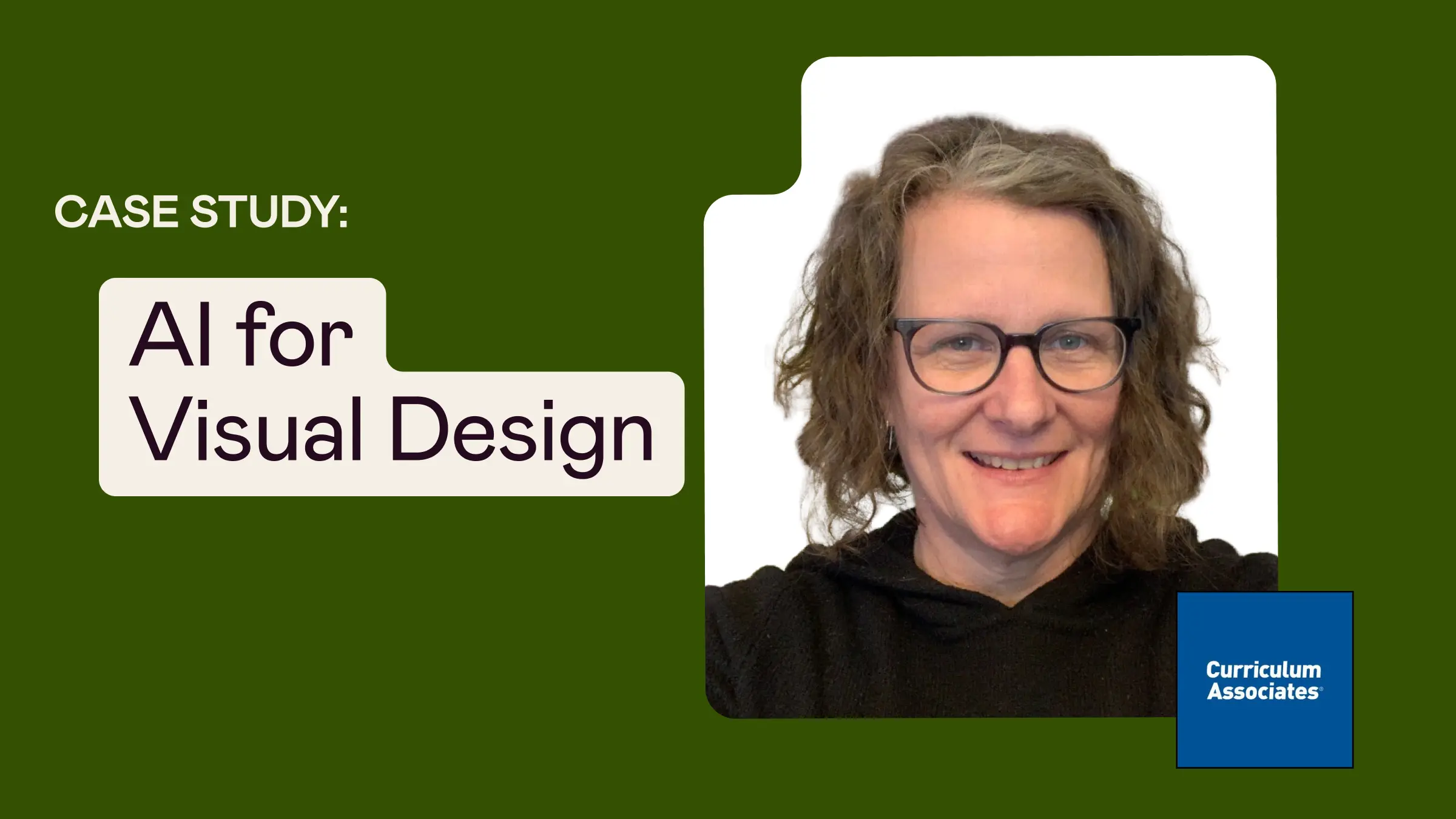Through Designlab’s AI for Visual Design and AI for UX Design courses, Lezlie Garr gained hands-on experience with emerging creative tools, developed portfolio-ready projects, and enhanced her digital design strategy to support her clientele.
A Designer Sharpening Her Skills with AI
Lezlie Garr works as a solopreneur and consultant, helping clients with digital design, user experience, and AI-based creative solutions. While Lezlie had taken the self-learning route in the past, she felt she wanted a more structured learning environment to expand her skillset within the quickly evolving AI landscape.
Lezlie enrolled in Designlab’s AI courses to gain a deeper understanding of the tools transforming the design industry. “AI stood out as a differentiator,” she shared. “I wanted to better understand the tools shaping the future of design and build practical skills I could immediately apply.”
Skill Growth and Strategic Differentiation
Lezlie came into her coursework with a few key goals:
- Differentiate herself in a competitive market: As a solopreneur working with website and UX design, Lezlie saw AI fluency as a way to stand out professionally.
- Build a portfolio of AI-driven design work: She prioritized project-based learning that would allow her to produce tangible assets to represent her skillset.
- Integrate AI across her creative workflow: She wanted to develop a practical understanding of where AI could enhance ideation, design execution, prototyping, and user research.
- Stay current with evolving technology: Lezlie was motivated to learn from up-to-date, practitioner-led content that reflected the fast pace of AI development.
Of her experience integrating AI into her processes, she shared: “I really think that the options, opportunities, and possibilities are pretty limitless at this point for what it can do.”

How AI for Visual Design Expanded Her Creative Toolkit
Lezlie took AI for Visual Design first, and the course exceeded her expectations. “I was floored at how many touchpoints during the creative process AI can fit into—how much it can optimize and enhance both efficiency and quality.”
I was floored at how many touchpoints during the creative process AI can fit into—how much it can optimize and enhance both efficiency and quality.
Lezlie is already integrating her learnings into her design practice. In one recent example, she used AI tools to create a scroll-triggered hero animation for a portfolio preview page. “I needed to create a hero image for a site, of a light bulb flickering when you scrolled down, and then back on when you scrolled up. So I first mocked it up in Midjourney using the relevant brand colors, and then took that image and put it into Runway to create the video of flickering light. A few months ago, I would have been racking my brain to find the perfect asset. Now I can create it myself.”
Building Strategy with AI for UX Design
Although different in format, AI for UX Design offered just as much value. One major takeaway was the central role of text-to-text AI tools like ChatGPT. “I went into the course expecting it to be more focused on text-to-image or visual generation,” she said. “But it was really interesting to see how tools like ChatGPT helped define tone, strategy, and structure in the early stages of the process.”
Her final project—a portfolio-ready UX concept shaped entirely through AI-assisted workflows—helped solidify that learning. Lezlie shared, “I’m very confident in incorporating UX design processes into web design strategy—and now certainly using AI for all of that because of this course.”

Community, Mentorship, and Real-Time Feedback
For Lezlie, a major highlight of both courses was the peer group sessions. The real-time problem solving and idea sharing helped her build confidence, especially as she transitioned more deeply into design-focused work.
Both of her mentors were standout guides: “It was clear they used these tools day in and day out,” she said. “It’s comforting to know you’re learning from people who really know the space.”
She also found the live lectures in the UX course—led by course creator Chrissy Welsh—impactful and well-facilitated. “I thought she had an approachable and relatable presentation style, and the lectures were fantastic. From an education standpoint, the sessions were also very interactive and engaging.”
Final Thoughts
For Lezlie, Designlab’s AI for Visual Design and AI for UX Design courses provided more than technical instruction—they offered a framework for creative experimentation, strategic thinking, and future-ready skill building.
“There are just so many touchpoints where AI can enhance the design process,” she reflected. “Thanks to Designlab, I feel confident and excited to bring those capabilities into everything I do.”



.svg)
%20(6).png)







.png)





